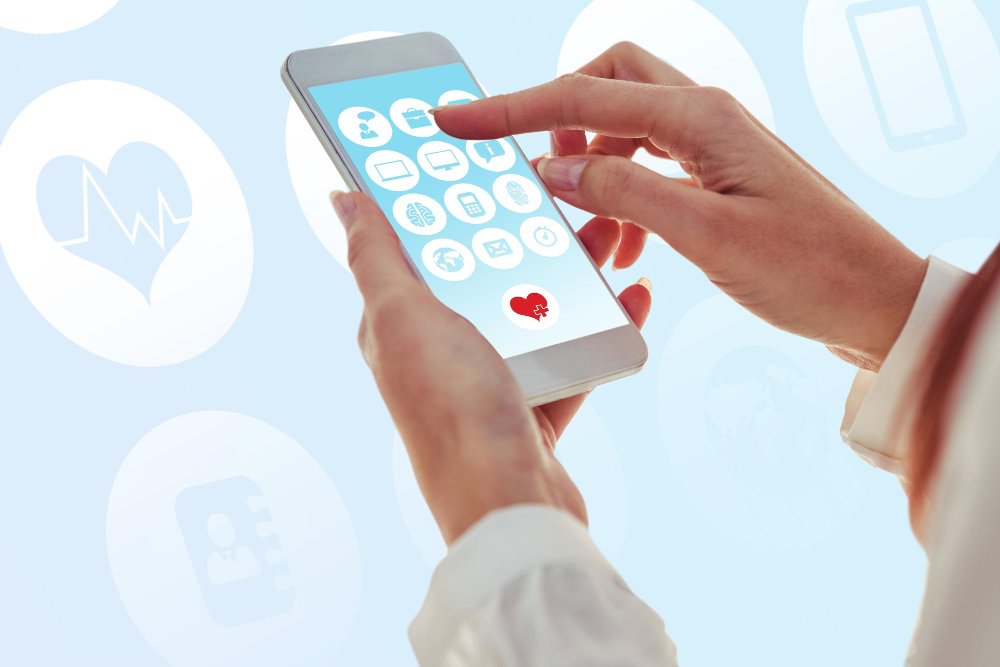Science-fiction once imagined doctors waving sleek “tricorders” over patients to read every vital sign in seconds. Today, anyone with a smartphone can capture an ECG, count breaths, or schedule a virtual visit on the commute home. What changed so quickly? Rising consumer expectations for on-demand care collided with hospital digital-transformation roadmaps, while COVID-19 pushed remote monitoring from novelty to necessity. As demand surged, healthcare mobile app development companies quickly became essential partners in delivering responsive, secure, and scalable solutions. The sections that follow trace key milestones, uncover current obstacles, and spotlight the professionals shaping tomorrow’s digital care.
Turning Ideas into Apps: Milestones in Healthcare Software
Early mobile health looked modest—step counters and calorie logs that felt closer to gaming than medicine. Yet each iteration brought the industry closer to clinical relevance.
Timeline of progress
| Year | Breakthrough | Why it mattered |
| 2006 | Nike+iPod sensor sync | Introduced wide-scale, phone-linked activity tracking |
| 2012 | AliveCor Kardia ECG gains FDA clearance | First smartphone accessory approved for clinical diagnostics |
| 2014 | Apple HealthKit & Google Fit launch | Unified data hubs for third-party health records |
| 2016 | Bluetooth Smart wearables standardize pairing | Simplified sensor integration across brands |
| 2020 | Global telemedicine surge during lockdowns | Accelerated reimbursement models and user adoption |
Behind each headline stood at least one healthcare app development company capitalizing on new building blocks:
- Cloud infrastructure lowered hosting costs and offered elastic scaling for peak appointment loads.
- Interoperability standards such as HL7 and FHIR unlocked secure, structured data exchange between apps and EHRs.
- Sensor ecosystems multiplied, from blood-glucose patches to spirometers, exposing rich APIs for developers.
Modern teams favor agile sprints, but speed never overrides safety. User-centered design interviews with patients and clinicians uncover pain points early, while automated CI/CD pipelines run HIPAA or GDPR compliance checks with every merge. The result: apps that feel simple yet pass audits on encryption, audit trails, and consent management.
Linking Clinics and Code: Modern Challenges in Medical App Development
Any medical app development company that builds software influencing treatment decisions operates inside a strict framework shaped by patient safety and data protection. Continuous validation sits at the core of every release cycle; each product update must demonstrate parity with clinical-grade equipment under ethical-review oversight, not just pass a routine regression test.
Parallel to this scientific scrutiny runs a multi-layered regulatory process. In the United States, the FDA’s Software as a Medical Device pathway evaluates intended use, risk classification, and cybersecurity posture, while in Europe the Medical Device Regulation adds post-market surveillance obligations that persist long after launch.
Safeguarding personal health information increases the technical stakes. Encryption keys live in segregated vaults, tamper-evident logs record every data touch, and detailed provenance chains prove exactly how a reading travelled from sensor to clinician dashboard. Heightened security does not exempt artificial-intelligence modules from full transparency either.
When algorithms flag arrhythmias or predict admission risk, teams expose training datasets, bias-mitigation methods, and performance metrics so that auditors and physicians can review them as critically as any pharmacology study. Meeting these expectations without slowing releases demands modular codebases, automated threat modelling, and documentation that maps each change to regulatory clauses, creating a traceable thread from commit message to bedside benefit.
People Behind the Screens: Developers Crafting Patient-Centric Solutions
Successful digital therapeutics emerge from multidisciplinary squads that think far beyond code syntax. Full-stack engineers translate clinical workflows into Swift or Kotlin while applying FIPS-validated cryptography to every network request. User-experience researchers run accessibility audits against WCAG 2.2, interview stroke survivors about font legibility, and refine navigation to suit one-handed use. Data scientists compress on-device models so they keep predicting blood-pressure trends even during a subway blackout, then visualise cohort adherence for clinicians within days of rollout. Clinical advisors line-up each feature with evidence-based protocols, flagging edge-case symptoms that the product team may overlook. Together these professionals share FHIR sandboxes, design-system tokens, and anonymised datasets supplied under strict Data-Use Agreements with partner hospitals and insurers.
Career paths widen as regulations tighten. Engineers augment coding expertise with cybersecurity certifications and workshops on medical terminology, while product leads study reimbursement policy so features align with payer incentives. Throughout the process healthcare app developers remember that every pixel can influence someone’s well-being; empathy during hallway interviews or telehealth shadow sessions is as vital as flawless encryption. By weaving clinical insight, technical rigour, and ethical awareness into a single workflow, the team turns complex health challenges into intuitive tools that patients trust daily.
Conclusion
From speculative gadgets to indispensable digital therapeutics, software now accompanies patients through prevention, diagnosis, treatment, and recovery. Alive ECG strips sit beside glucometer integrations, while teleconsultations replace many waiting-room visits. This progress springs from joint ingenuity: developers architect resilient code, clinicians validate protocols, and regulators supervise safety.
Emerging frontiers promise still-smarter care. Predictive genomics may warn of drug interactions before a prescription prints. Ambient sensors embedded in furniture could track gait and catch early signs of frailty. Cross-industry alliances—think wearable makers plus pharma—will refine personalized dosing apps delivered as healthcare app development services. Each advance inches everyday life closer to the future once reserved for science fiction, confirming that responsible collaboration will keep innovation safely in patients’ hands.

